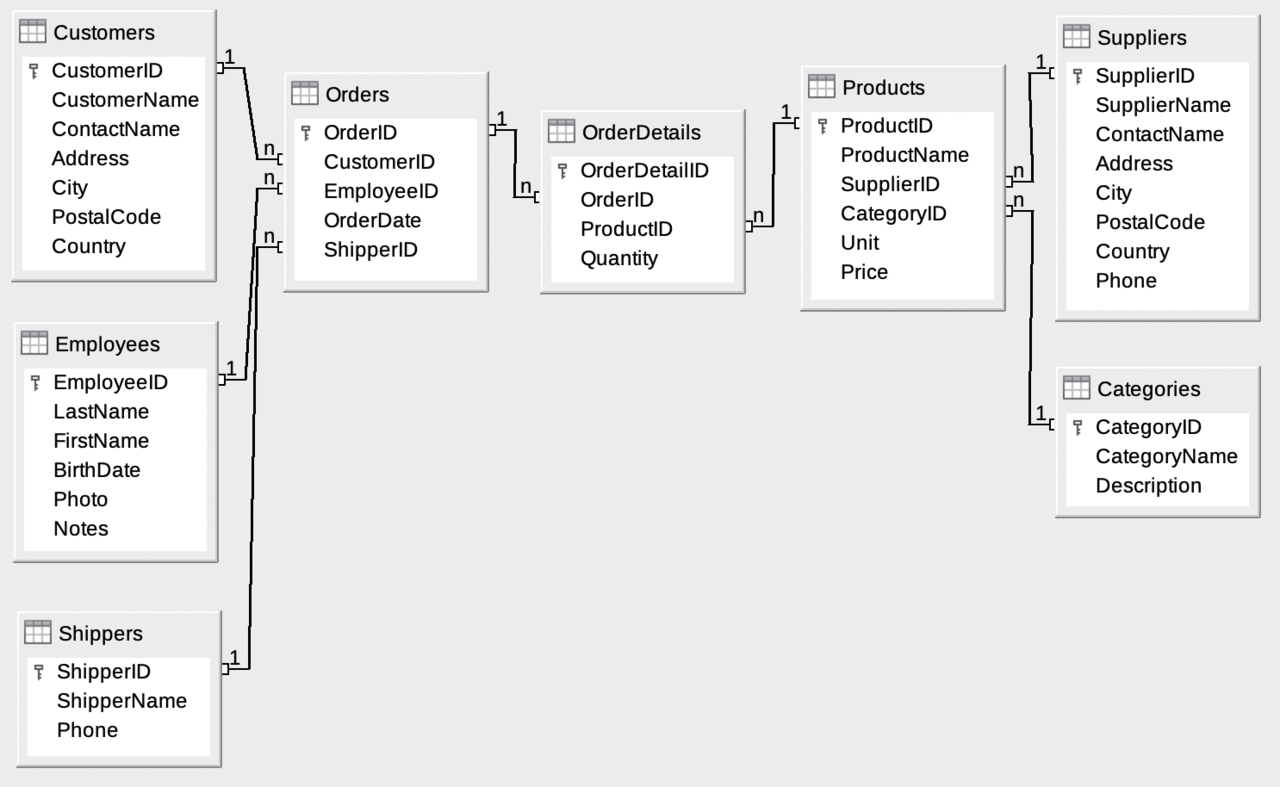SQL ALTER TABLE Statement (Cont.)
Look at the person table:
| person_id |
last_name |
first_name |
address |
city |
| 1 |
Hansen |
Ola |
Timoteivn 10 |
Sandnes |
| 2 |
Svendson |
Tove |
Borgvn 23 |
Sandnes |
| 3 |
Pettersen |
Kari |
Storgt 20 |
Stavanger |
Now we want to add a column named DOB in the person table.
We use the SQL statement:
|
|
ALTER TABLE person
ADD DOB DATE;
|
|
Notice that the new column,
DOB, is of type
DATE and is going to hold a date.
The data type specifies what type of data the column can hold.
The
person table will now look like this:
| person_id |
last_name |
first_name |
address |
city |
DOB |
| 1 |
Hansen |
Ola |
Timoteivn 10 |
Sandnes |
|
| 2 |
Svendson |
Tove |
Borgvn 23 |
Sandnes |
|
| 3 |
Pettersen |
Kari |
Storgt 20 |
Stavanger |
|
Now we want to change the data type of the column named
DOB in the
person table.
We use the SQL statement:
Notice that the DOB column is now of type CHAR and is going to hold a string.
|
|
ALTER TABLE person
MODIFY DOB CHAR(10);
|
|
Next, we want to delete the column named DOB in the person table.
We use the SQL statement:
|
|
ALTER TABLE person
DROP COLUMN DOB;
|
|
The
person table will now look like this:
| person_id |
last_name |
first_name |
address |
city |
| 1 |
Hansen |
Ola |
Timoteivn 10 |
Sandnes |
| 2 |
Svendson |
Tove |
Borgvn 23 |
Sandnes |
| 3 |
Pettersen |
Kari |
Storgt 20 |
Stavanger |
Demonstration
Below is an SQL test area from W3Schools, which uses the well-known Northwind sample database.
The tables here are for read only because of the problem of embedding the scripts.
For a fully working example, check this by using Chrome.

|
|
The Database includes:
| Tablename | Record |
|---|
| Customers | 91 |
| Categories | 8 |
| Employees | 10 |
| OrderDetails | 518 |
| Orders | 196 |
| Products | 77 |
| Shippers | 3 |
| Suppliers | 29 |
|
This SQL-Statement is not supported in the WebSQL Database.
The example still works, because it uses a modified version of SQL.
Your browser does not support WebSQL.
Your are now using a light-version of the Try-SQL Editor, with a read-only Database.
If you switch to a browser with WebSQL support, you can try any SQL statement, and play with the Database as much as you like. The Database can also be restored at any time.
Our Try-SQL Editor uses WebSQL to demonstrate SQL.
A Database-object is created in your browser, for testing purposes.
You can try any SQL statement, and play with the Database as much as you like. The Database can be restored at any time, simply by clicking the "Restore Database" button.
W3C WebSQL
WebSQL stores a Database locally, on the user's computer. Each user gets their own Database object.
WebSQL Browser Support
WebSQL is supported in Chrome, Safari, and Opera.
If you use another browser you will still be able to use our Try SQL Editor, but a different version, using a server-based ASP application, with a read-only Access Database, where users are not allowed to make any changes to the data.
